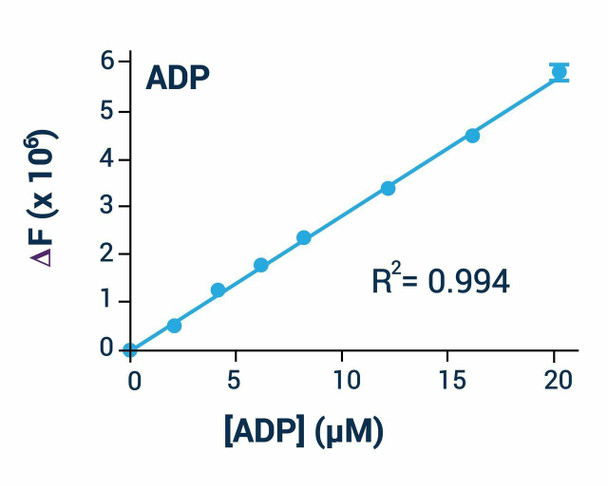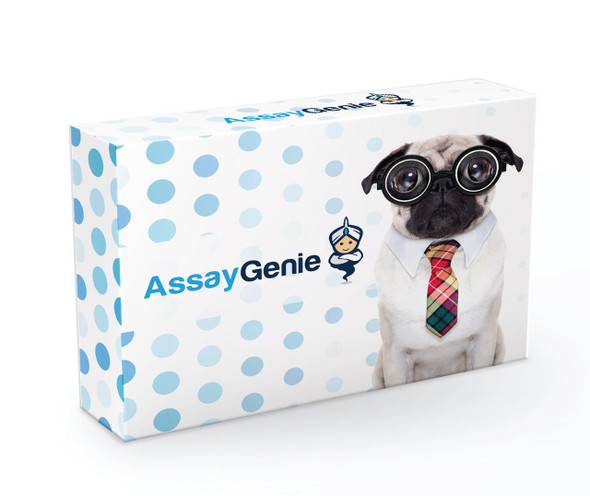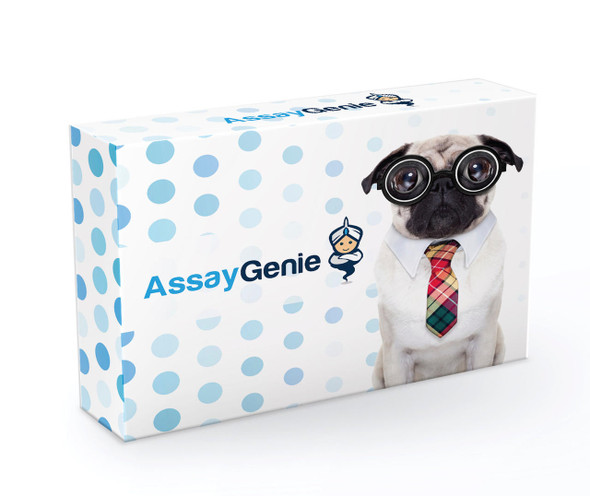

Description
Assay Genie's newly designed ADP Assay Kit provides a convenient fluorometric means to measure ADP level even in the presence of ATP. In the assay, ADP is converted to ATP and pyruvate. The generated pyruvate is then quantified by a fluorimetric method (Ex/Em = 530/590nm). The assay is simple, sensitive, stable, high-throughput adaptable and can detect as low as 0.1 ADP in biological samples.
Applications
For quantitative determination of ADP determination in cells and other biological samples.
Key Features
- Safe. Non-radioactive assay.
- Sensitive and accurate. As low as 0.1 ADP can be quantified.
- Homogeneous and convenient. "Mix-incubate-measure" type assay. No wash and reagent transfer steps are involved.
- Robust and amenable to HTS: Can be readily automated on HTS liquid handling systems for processing thousands of samples per day.
Data Sheet | |
| Kit Includes | Reagent A: 6 mL Enzyme: 120 uL 10% TCA: 6 mL Reagent B: 6 mL Standard: 100 uL Neutralizer: 1.5 mL |
| Kit Requires | Pipetting devices and accessories (e.g. multi-channel pipettor), black flat-bottom 96-well plates, centrifuge tubes and plate reader. |
| Method of Detection | FL530/590nm |
| Detection Limit | 0.1 uM |
| Samples | Cells and other biological samples |
| Species | All |
| Protocol Length | 30 min |
| Size | 100 tests |
| Storage | Store all reagents at -20°C |
| Shelf Life | 6 months |
More Details
Adenosine diphosphate (ADP) is the product of ATP dephosphorylation by ATPases. ADP can be converted back to ATP by ATP synthases. ADP levels regulate several enzymes involved in intermediary metabolism. Conventionally, ADP levels are measured by luciferase/luciferin mediated assays after ADP is converted to ATP. However, since these assays require measurement of ATP in the sample before conversion of ADP to ATP, if the nascent ATP concentration is significantly higher than the ADP concentration, the ATP signal will drown out the ADP signal.








